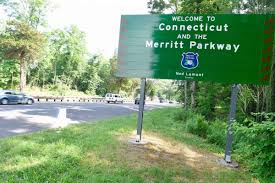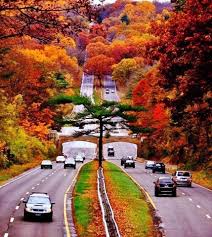|
Preface
The Game of Life, also known simply as Life, is a board game originally created in 1860 by Milton Bradley as The Checkered Game of Life, the first ever board game for his own company, the Milton Bradley Company. The Game of Life was US's first popular parlor game. The game simulates a person's travels through their life, from early adulthood to retirement, with college if necessary, jobs, marriage, and possible children along the way. In 1960 the modern Game of Life was introduced. A player travels along the track in a small plastic automobile, according to the spins of a small wheel on the board with spaces numbered one through ten. (Wikipedia) The Game of Life Isn’t it interesting how one’s life can twist around itself? You might, for instance, spend years driving past certain parkway exits, giving them no mind whatsoever, and then discover, as you reflect, that events were transpiring off those very exits (as you were driving by) which would have spectacular consequences for your life! Such is the case with the King Street exit on the Hutchinson River/Merritt Parkways, which delineates the state divide between New York and Connecticut. Little did I know. June 17, 1967. My father, mother, brother, and I squeezed into our new Volkswagen beetle early that Saturday morning for a trip to New Haven, Connecticut. I had been accepted to Yale on April 15th but never visited the campus. As a working-class family, “college visits” were not on our radar. However, since I had been accepted, my parents decided it would be good to visit the campus prior to my moving there in September - so off we went. I had never set foot in Connecticut prior to that trip. My parents, early in their marriage, had taken a trip to Plymouth Rock and Cape Cod so they had driven through the state at least once before. The drive to the north shore of Long Island and across the Whitestone Bridge was familiar --- we had often gone to my Grandmother’s house in the Catskills via this route. But following the Hutch north – and not heading for Taconic State Parkway or the New York State Thruway – was new. Even though the Hutchinson River Parkway – and then the Merritt Parkway – were like Robert Moses’s “ribbon parkways” we knew well on Long Island, the terrain they traversed was novel. Rolling hills and plentiful, variegated foliage was unique to New England – and new to us. As with anything new, I found it engaging in the immediate without thinking how commonplace it would become over time. By the time I graduated in 1971 the Hutch/Merritt scenery was old hat and barely noticed. Over four years, I can’t calculate how many times I passed Exit 30 (heading north) and Exit 27 (heading South) traveling between Bay Shore (on Long Island) and New Haven. More significantly, I had no idea there was a place called “Rye Town” (in New York) located directly off that exit, much less that what was brewing in that unincorporated village during those years would have life-changing consequences for me! And those events, which I have only lately learned, is where this story really begins. “The Fifth of Rye” Rye Brook is now an incorporated village in New York State, bordered by Port Chester on the South, Rye to its East, Purchase to its North, and Greenwich, CT to its East. But it wasn’t always so. In fact, Rye Brook only incorporated in 1981, and that was after years of turmoil, particularly with the village of Port Chester – which Rye Brook was part of, as an unincorporated entity for many years. Rye Brook was one of five “districts” within Port Chester’s school zoning. In fact, it was District 5 – and its critics from Port Chester disparagingly referred to it as “the Fifth of Rye.” There was genuine animosity between residents of Port Chester and the inhabitants of Rye Brook --- a slowly simmering feud that began in the late 1950’s. After World War II large tracts of land in the New York metropolitan area --- Long Island, northern New Jersey, Westchester County, NY --- were being sold to developers to create new housing for the returning veterans. Spurred by the G.I. Bill, the housing and baby booms exploded. Such was the case in Port Chester/Rye Brook (then called “Rye Town”). Port Chester had incorporated as a village in 1868 and by the post-World War II period was a working/middle class town with a large Italian American population. The Rye Brook community grew in the late 1940’s on the former Lehmann Estate property and, by 1950, had erected the Ridge Street School for the new Port Chester District #5. The population of Rye Brook was upper-middle/upper class professionals and, over time, predominantly Jewish. The combination of economic and ethnic difference between Port Chester and Rye Brook was a long, slow fuse that finally ignited in the late 1960’s. While I was driving past the Ridge Street and King Street exits on the Hutchinson River Parkway during those late ‘60’s/early ‘70’s, I had no idea that local conflicts over public schooling were reaching a head --- and that it would have a monumental effect on my life in the not-so-distant future. The Ridge Street School, District #5, served the Rye Brook community and the building ultimately housed a K-9 student population. After 9th grade students would go to Port Chester High School --- until the late 1960’s. At some point around 1967 or 1968, the conflicts between the Port Chester School Board and the Rye Brook School Board reached a breaking point and Port Chester announced they would no longer accept Ridge Street School students at Port Chester High School (“overcrowding” was the ostensible reason) --- causing the Rye Brook residents to send their 10-12 students to Mamaroneck or Valhalla High Schools, a significant distance away, particularly compared to the convenience of Port Chester High School. At that point, the serious fighting began. A group of progressive activists in Rye Brook petitioned the State of New York to create their own high school (something the State was not inclined to do at that point in history). The more conservative elements in Port Chester, particularly through the local newspaper, the weekly Westmore News, began a concerted attack on Rye Brook’s School Board (and citizens) – portraying them, alternately, as “Rad-Libs,” “Limousine Liberals,” and “fascists.” The citizens of Rye Brook, by the fall of 1970, presented the community with a referendum to build their own junior/senior high school (they had convinced the state and secured a potential bond from Citibank). The Westmore News stoked the usual “uncontrolled spending, rising taxes” scare stories while accusing their upscale neighbors of creating an “elite, private-like arts and humanities” school with an “indoor-outdoor” swimming pool (no such pool was ever in any plans). By November 1970 the referendum for a new high school had passed and the Blind Brook Junior/Senior High was about to become a reality, with construction to begin as soon as possible. The unincorporated village was looking forward to opening their new facility in September 1973. As I traveled back and forth from New Haven to Long Island, from New Haven to Washington, D.C., from New Haven to Manhattanville College (Yale was still an all-male school when I began in 1967), from New Haven to New York City, I passed the Ridge Street and King Street exits countless times, unaware of the local drama being acted out just beyond my vehicle. In the fall of 1972, as part of my master’s degree program at Colgate, I was assigned a paid teaching internship at Greenwich High School and lived in Byram, Connecticut, one block away from Port Chester, New York. The Byram River, the state line between New York and Connecticut was, literally, in my backyard. I had no idea that Blind Brook Junior/Senior High School was under construction just a few miles from where I was living. Spring 1973 found me back on campus in Hamilton, New York, completing courses for my degree and, by March, job hunting. An ad in the “Teacher Drop-Out Newsletter,” a publication listing jobs in “alternative schools” out of Amherst, MA, caught my eye. A new public school was opening in Rye Brook, New York in the fall of 1973 and needed people who could teach “Humanities.” I was about to be certified in Social Studies and English so “Humanities” looked like a good fit. Early in April, I found myself back on the Hutchinson River Parkway, taking Exit 29 (Ridge Street) and headed for an interview at the Ridge Street School with the new Principal of Blind Brook Jr/Sr. High School, David Schein. It was the first time I ever took that Exit, but it certainly wouldn’t be the last.
0 Comments
Leave a Reply. |
|
- Home
- The Blast -Blog
- The Blast (Archive)
- Blast Directory (Archive)
- California Streamin'
- Politics
- Culture
- ART
- SONGS
- Reviews
- Op-Ed Material
- New Writing
- Old Writing
- ARCHIVES
- "If you went to Yale . . ."
- Outing the Privilege Gap
- Thoughts on TFA
- Sir Ken Robinson: Education & Creativity
- My 91 seconds of Rock-music-video Fame!
- Creating Democratic Schools
- Acknowledgments
- About the Author
- Contact Info
Proudly powered by Weebly


